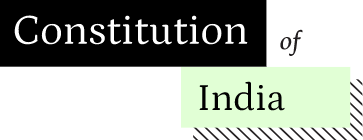The Indian Rural Republics continues to flourish during the Hindu, Muslim and Peshwa governments till the advent of the East India Company. They survived the wreck of dynasties and downfall of Empires. “The independent development of local government provided like the shell of the tortoise, a haven of peace where the national culture could draw in for its own safety when political storms burst over the land.[54] The Kings received only State Revenues from the Village Commonwealths and generally did not interfere with their local government. As Sir Charles Trevellyn remarks, “one foreign conqueror after another has swept over India, but the Village Municipalities have stuck to the soil like their own Kusha grass.’ “India has undergone more religious and political revolutions than any other country in the world,” observes Sir George Birdwood. “But the Village Communities remain in full municipal vigour all over the peninsula. Scythian, Greek, Saracen, Afghan, Mongol, and Maratha have come down from its mountains, and Portuguese, Dutch, English, French and Dane up out of its seas, and sets up their successive dominations in the land; but the religious trade-union villages have remained a little affected by their coming and going as a rock by the rising and falling of the tide.”[55]In his famous minute of 1830, Sir Charles Metcalfe, the then acting governor-general of India wrote:
